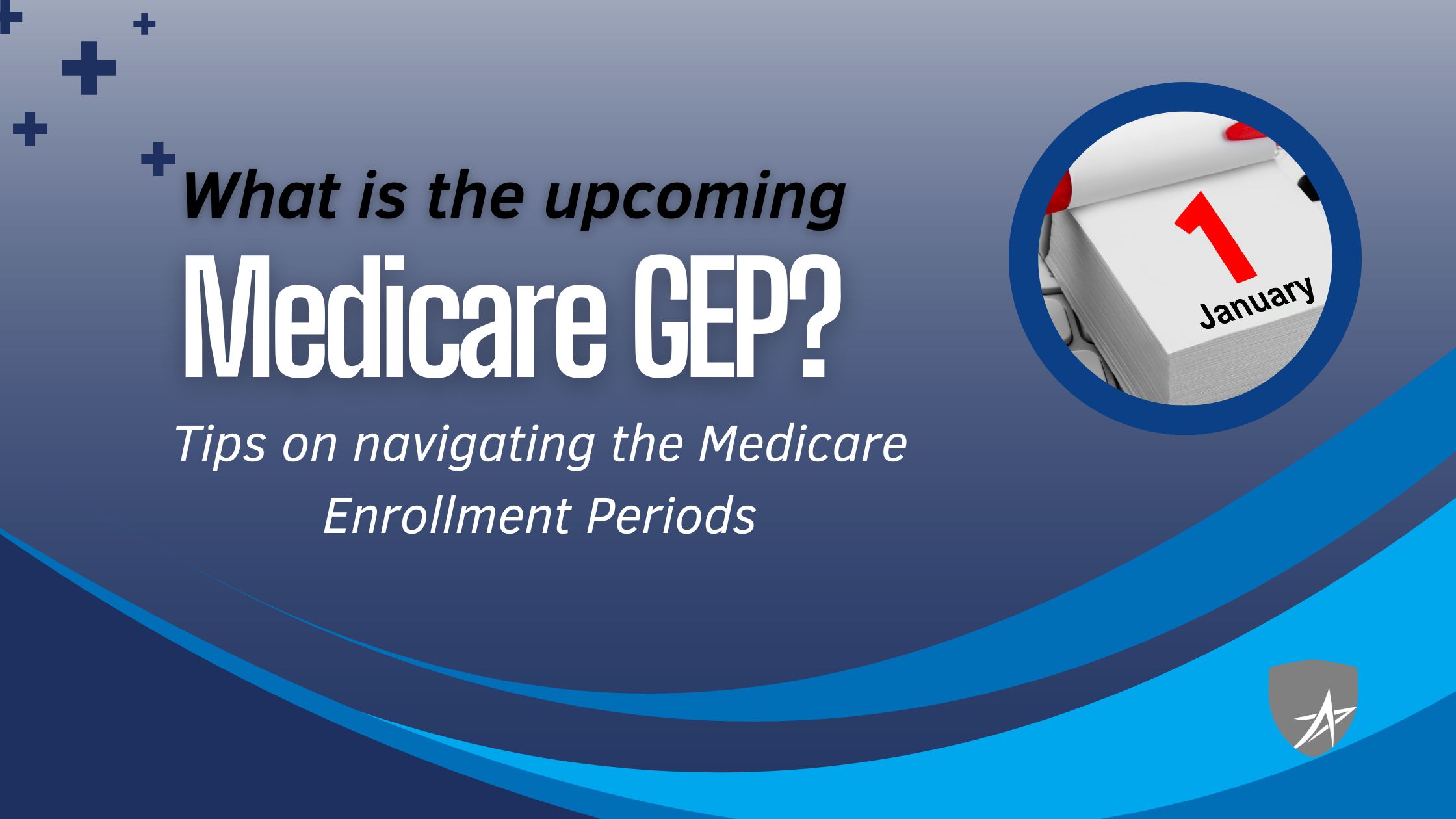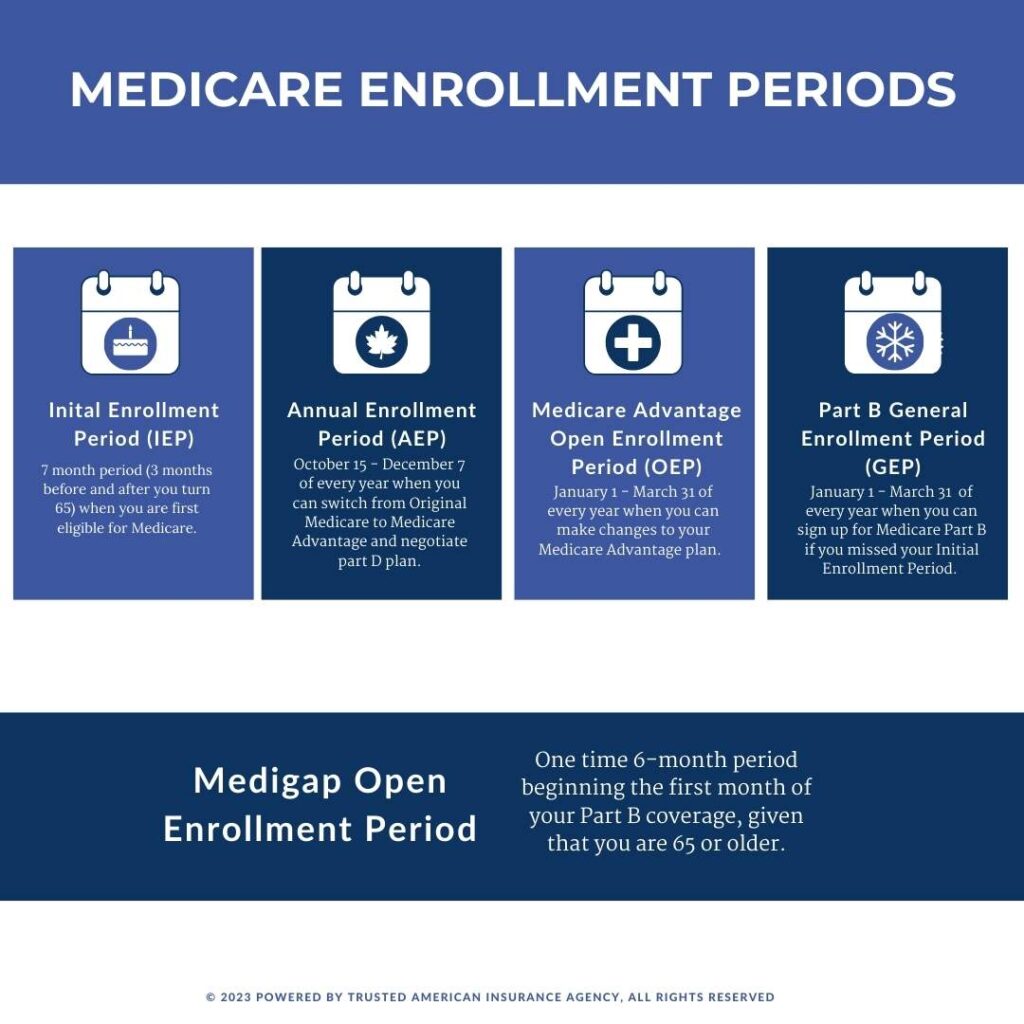
If you’re new to Medicare, understanding the various enrollment periods can be a bit overwhelming. With the Annual Enrollment Period (AEP) coming to a close, two crucial enrollment periods are just around the corner: the General Enrollment Period (GEP) and the Medicare Advantage Open Enrollment Period (MAOEP).
Both run simultaneously from January 1st to March 31st.
First, some background. When you are new to Medicare, you have an Initial Enrollment Period (IEP) that runs for a total of 7 months: 3 months before the month you turn 65, the month you turn 65 and the 3 months following that month.
Example: If your birthday is December 3rd, your IEP starts on September 1st and ends on March 31st.
This is the best time to enroll in Original Medicare (Parts A and B together) because you’ll avoid potential penalty fees and delays in healthcare coverage.
However, if you happen to miss your Initial Enrollment Period (IEP), don’t worry. You get another chance each year during the General Enrollment Period (GEP) to sign up for Medicare Part A and/or Part B. During the GEP, you can only enroll in Medicare Part A and/or Part B.
During this time, you cannot:
- Enroll in a prescription drug plan (Part D)
- Buy a Medicare Advantage plan (Part C)
- Change any existing coverage you might have (like going from one Advantage plan to another or dropping Part D)
- Make any other changes to your coverage
Penalties for Signing Up Late
If you sign up for Parts A and/or B during the General Enrollment Period, you might have to pay extra on your usual premiums – that’s the penalty for signing up late. That’s why it’s a good idea to enroll during your Initial Enrollment Period (IEP).
- Part A Late Enrollment:
If you need to purchase Part A and miss your first Medicare eligibility chance, your monthly premium may increase by 10%. The penalty lasts for twice the number of years you delayed. For example, if you wait 2 years to sign up, you’ll pay a higher premium for 4 years. Special Enrollment Periods may exempt you from penalties – check your eligibility.
- Part B Late Enrollment:
You usually won’t face a Part B penalty with a Special Enrollment Period. Expect an extra 10% for each year you could have enrolled but didn’t. Your income may also affect your premium. Learn more about Special Enrollment Periods for your options here: Special Enrollment Periods | Medicare
During the GEP, there is another period called the Medicare Advantage Open Enrollment Period (MAOEP). The main difference between Medicare Advantage Open Enrollment and General Open Enrollment is who can use each one and what changes you can make.
The Medicare Advantage Open Enrollment Period (MAOEP) lets you:
- Change Medicare Advantage Plans: You must be already enrolled into a Medicare Advantage plan. If both Medicare Advantage plans are offered in your area, you may change from one to another.
- Go Back to Original Medicare: You can drop your Medicare Advantage plan and return to Original Medicare (Parts A and B), with a Part D prescription drug plan. You also have the option to add a Medicare Supplement (Medigap) policy. However, this is not a guaranteed issue. You will most likely have to go through Medical Underwriting.
During this time, You cannot:
- Enroll in Medicare Advantage for the first time if you are currently on Part A and Part B (Original Medicare).
MEDICARE ENROLLMENT PERIODS AT A GLANCE

Understanding and navigating these enrollment periods is crucial for ensuring that you have the right Medicare coverage. If you have any questions or need more information on changing your plan, feel free to reach out to our customer support services.
The post What is the Upcoming Medicare GEP? appeared first on Trusted Medicare Answers.


